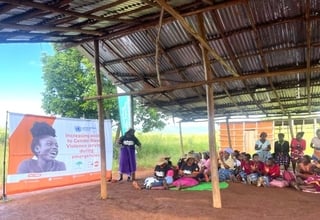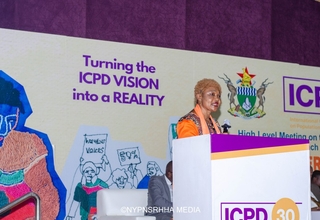By Taurai Shava - VOA Zimbabwe
BULAWAYO — Zimbabwe’s Health Development Fund appears to be playing a critical role in reducing the country’s maternal mortality rate and improving the general situation in the health sector. Representatives of donor agencies, who are contributing money towards the fund, recently visited some of the projects which include Maphisa Hospital in Matabeleland South province.
According to Health Minister Dr. David Parirenyatwa, Zimbabwe’s maternal mortality rate remains high, but interventions such as the establishment of maternity waiting homes at various health facilities in rural areas is helping in bringing it down.
Dr. Parirenyatwa, who was leading a delegation of ambassadors and representatives of some European Union countries in Zimbabwe, said the Health Transition Fund - now known as the Health Development Fund – has gone a long way in reviving the country’s health sector.
The Health Development Fund is a continuation of the Health Transition Fund, a multi-donor fund which started in 2012 when Zimbabwe had an inclusive government to avert the crisis in a health sector.
Members of the European Union are the major donors including SIDA, UK Aid and Irish Aid, with the United Nations Children’s Fund and the United Nations Population Fund being implementing partners.
Through the fund, the maternity waiting home at Maphisa District Hospital in Matabeleland South province was among 10 such facilities that were renovated and refurbished in the region, out of a total of 119 facilities that received similar assistance across the country.
Dr. Parirenyatwa said the provision of maize meal, beans and kapenta fish to the expecting mothers, under the United Nations Population Fund’s Integrated Support Program, also ensures that both mothers and unborn children are properly nourished.
Maternal health is one of the most critical indicators in a country’s health delivery system, adding that it is important for government and stakeholders to ensure that the mortality rate continues to decrease" H.E. Phillipe Van Damme
A new VIAC centre for the screening and testing of cervical cancer, was also recently established at Maphisa, making it the seventh site in the province to have such a facility.
With the hospital catering for a population of nearly 100,000 people, Dr. Parirenyatwa said the establishment of the centre would help bring a much-needed service closer to the people.
While applauding government for stemming the crisis in the health sector, European Union ambassador Phillipe Van Damme, who was part of the tour, said maternal health is one of the most critical indicators in a country’s health delivery system, adding that it is important for government and stakeholders to ensure that the mortality rate continues to decrease.
Chairperson of the parliamentary portfolio on health, Dr. Ruth Labode, agreed that the health fund has gone a long way in reducing Zimbabwe’s maternal mortality rate, as some women now have access to health in remote parts of the country.
But fellow legislator Thabitha Khumalo, who until recently was the vice president of the Inter Parliamentary Union advisory group on HIV/AIDS, said the support from the health fund still leaves a lot to be desired.
At the same time, Dr. Parirenyatwa said government is in consultation with donors as well as doctors and nurses to work out new salary perks for health workers.
He was responding to a question from Studio 7 on the sidelines of the tour on what government is doing to stop strikes by doctors and nurses.
One of the seven thematic areas of the Health Development Fund is human resources for health under which training and incentives for health workers are funded.
The Ministry of Health has previously been under fire for channeling incentives under the fund only to senior officials in the ministry and not to health workers as expected.
Listen to audio report here.



